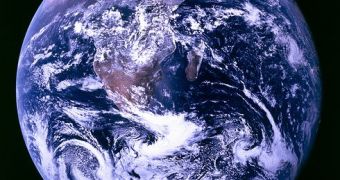A team of researchers from the University of Bristol and the University of St Andrews, have developed a new and more precise way of calculating the age of the Earth’s.
Our planet's continental crust is the mains record of conditions on the Earth, for the past 4.4 billion years now.
When the continental crust formed, it changed the composition of the mantle and the atmosphere, and since it supports life and it is a sink for carbon dioxide through weathering and erosion, it has a key role in the evolution of the planet.
Still, even if most geoscientists believe that the juvenile continental crust formed from the depleted upper mantle, there is a very large debate over the time of its formation.
A common way of establishing the time when the new crust was formed is to take any crustal sample and to determine its radiogenic isotope composition, before comparing its isotope signature with that of the depleted mantle.
The researchers basically explained that you can use radiogenic isotopes to calculate 'model ages' of crust formation, which could represent the time since a crustal sample was separated from its mantle source.
In their paper, Dr Bruno Dhuime of Bristol’s School of Earth Sciences and colleagues, described a new methodology for the calculation of model ages, based on the isotope composition of the average new continental crust.
“Ages calculated this way are significantly younger than model ages calculated from the isotope composition of the depleted mantle,” said Dr Dhuime.
“New ages obtained are more consistent with the geological record, which opens new perspectives in crustal evolution studies based on radiogenic isotopes,” he added.
For the last thirty years, the concept of ‘model age’ has been widely used in crustal evolution studies.
But this new study makes it even more clear that using the isotope composition of the depleted mantle as a reference for the calculation of model ages of continental crust generation, can result in incomplete information and erroneous interpretations.
The new method is described in the paper published in Science.

 14 DAY TRIAL //
14 DAY TRIAL //